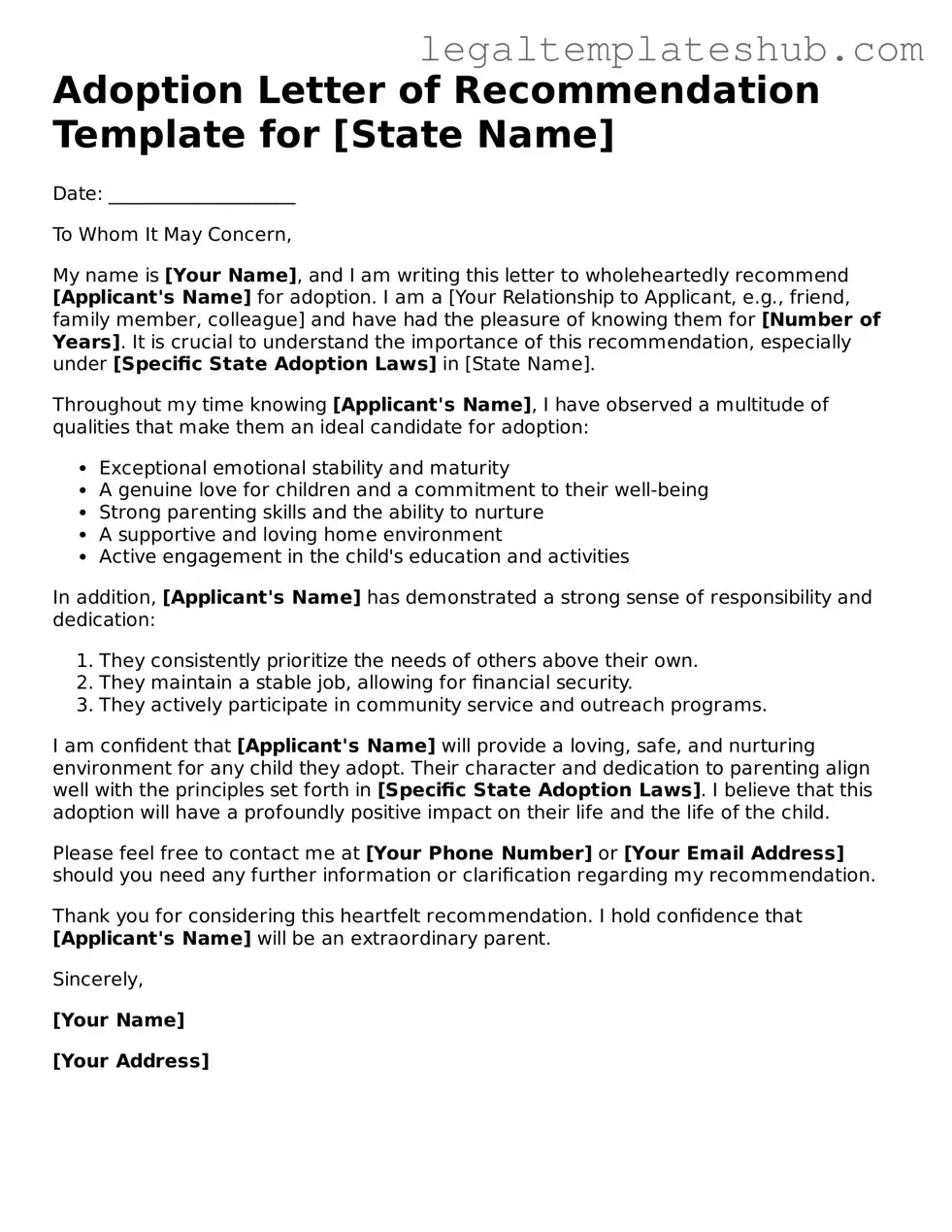Printable Adoption Letter of Recommendation Template
The Adoption Letter of Recommendation form is a document that provides insights into a prospective adoptive parent's character and suitability for adoption. This form is often completed by individuals who know the adoptive parent well, such as friends, family members, or colleagues. Their endorsements can play a crucial role in the adoption process, helping to ensure a stable and loving environment for the child.
Ready to support an adoption application? Fill out the form by clicking the button below.
Access Editor
